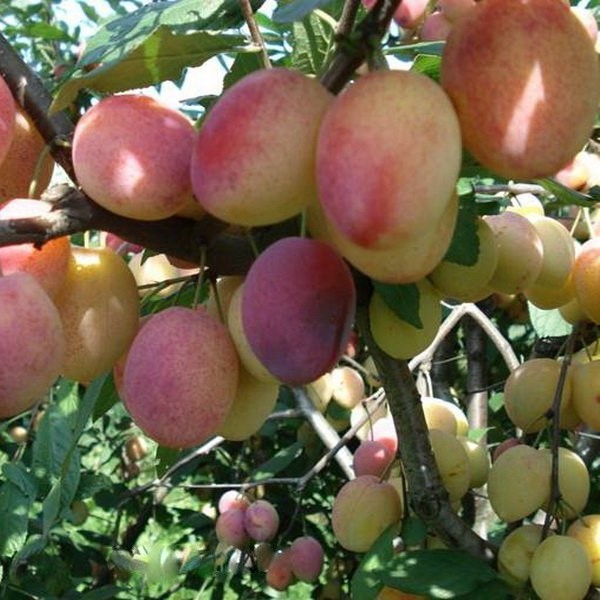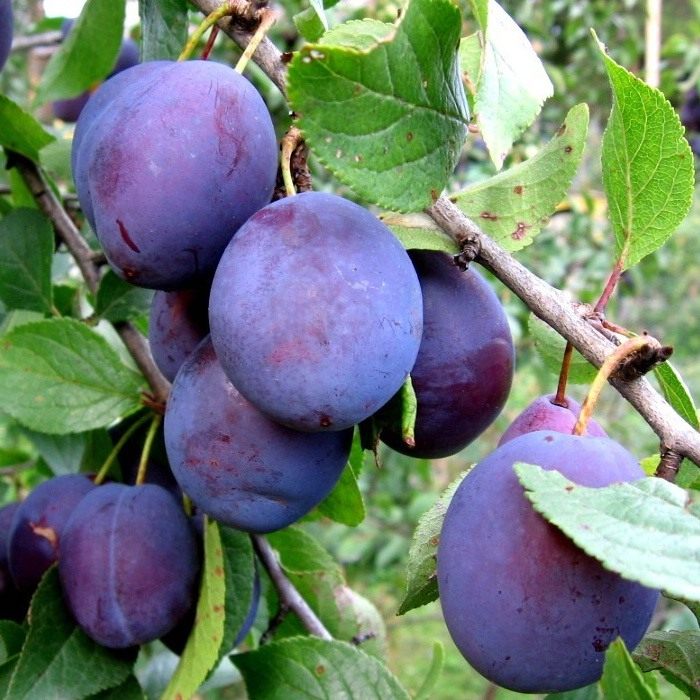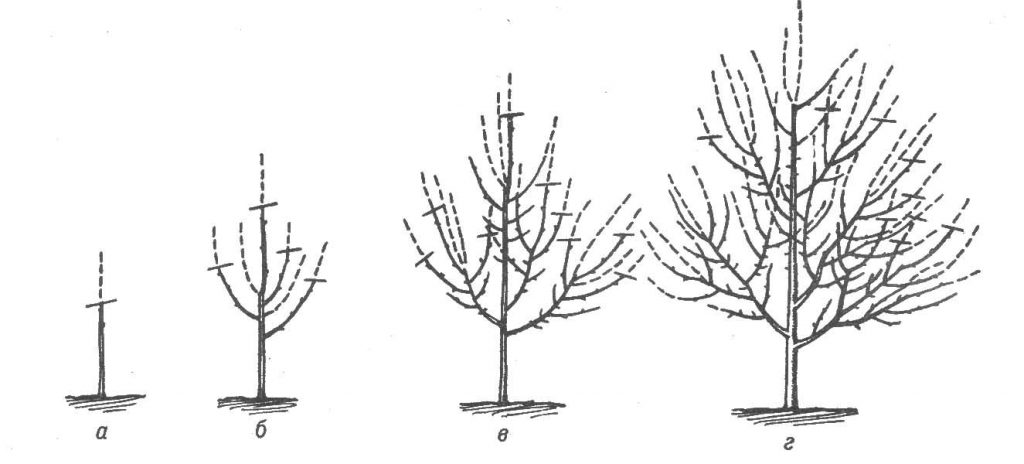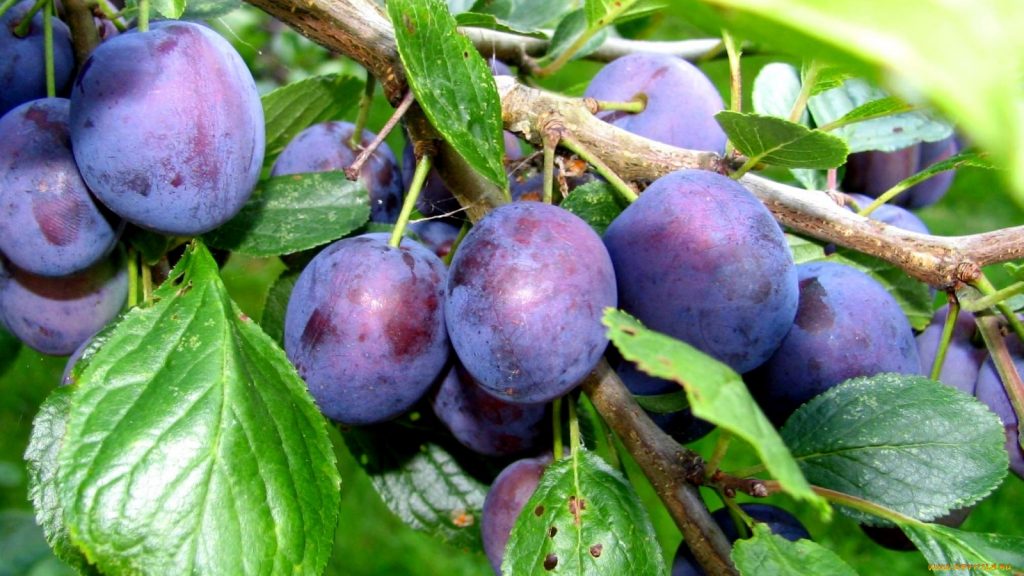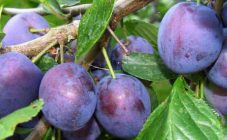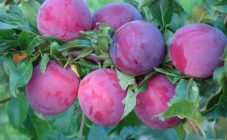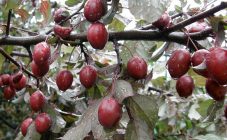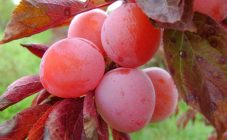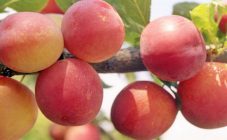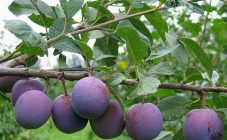Content:
Plum is an unpretentious fruit tree that takes root in all regions of Russia. The main thing is the right choice of the variety. Any gardener who owns an orchard wants to be decorated with a plum. This fruit has many medicinal properties. It has a beneficial effect on blood vessels and has a mild laxative effect. The fruits are well transported, stored for a long time. There are many known ways to consume and process this fruit. It can be smoked to get prunes, frozen (while the healing properties are not lost), boiled compotes from it, consumed fresh, etc.
Still, plum is not as common in Russia as apple or cherry trees. The reason is pretty simple. Plum blooms late, due to the fact that most varieties do not self-pollinate, it does not have enough time to form a fruit ovary. Recently, breeders have bred a large number of hybrid plums that can bear fruit in central Russia.
The Blue Dar plum variety is just over 15 years old. They took it out in the early 2000s. It takes root well in the central part of the Russian Federation. It was created as a result of crossing the Zheltaya Ochakovskaya variety and the Pamyati Temiryazeva variety.
Characteristics of the variety
The Blue Dar tree is not very tall. The maximum height of the plum is no more than 3 m. The crown is rather rare, oval in shape. Shoots are grayish brown. The kidneys are divided into two types: vegetative and generative. They are located on the shoot with a slight deviation from the main branch. The variety has good frost resistance. Even if after the beginning of flowering there is a drop in air temperature to a slight frost, the tree will still bear fruit. The leaves are rich green, medium in size, there is a small fluff on the front side. Edge of the leaf with small denticles. The plum color of this variety is not very large in comparison with other varieties. On a bare stem, a flower consisting of 5 petals.
The fruits of the Blue Dar variety are small. The average weight of the fruit is about 15 grams. Fruits are bluish in color, there is a slight whitish bloom. The shape is elongated, elongated. The peduncle is small. The pulp is firm, with a greenish tinge, the stone is well separated. The plum tastes sweet, with the presence of sourness.
The tree begins to bear fruit in the 4th year after planting in a permanent place. The fruits will ripen by the end of August. The variety is considered fruitful. Up to 40 kg of fruit can be harvested from an adult tree. Will bear fruit for 20 years.
The fruits, given their density, tolerate long-distance transportation well.
A hybrid of the Blue Dar plum variety is self-fertile, but if you plant other varieties of plums next to it, it will not be worse. On the contrary, it will only increase the yield.
Plum resistant Blue gift to such pests as aphids and stalks. Hardly tolerates dry weather. Needs fairly frequent watering.
Planting and leaving
The seedling must be bought in certified centers or at agricultural exhibitions. It is desirable that a description of the variety, characteristics of the fruit go to the seedling. It is recommended to choose two-year seedlings. This age of the tree will allow it to take root in a new territory without any problems. When purchasing, carefully inspect the root system for damage. The roots should look strong and healthy. The stem must be flat, not dry.
Place for plums should be set aside on a small hill. She prefers neutral soil.If the soil is acidic, it is neutralized with ash or lime. If the soil is high in clay, it is mixed with peat or sand. It is recommended to plant the seedling in a place that is protected from through winds.
The plum sits in both spring and autumn. But in the northern regions of Russia, it is recommended to plant the Blue Gift in the spring. So the root system adapts better to new conditions, and the tree will be healthier and stronger. The best time for planting is the first and second ten days of April.
If several plum seedlings are planted on the site at once, the distance between them should be at least 2 meters.
It is recommended to dig a hole for planting plums in the fall. If mineral and organic fertilizers are introduced into the pit in the fall, by the spring they will saturate the soil with all the necessary vitamins.
When planting a seedling, it is necessary to ensure that the roots do not bend or break. In the planting pit, they must be leveled.
Since the tree is quite compact in size, it does not need grafting and frequent pruning, but it is highly demanding for frequent watering. It does not tolerate dry weather and can quickly die without water. It is recommended to water it once every two weeks. Do not flood, because the root system may start to rot. An adult mature tree needs 7 liters of water. It should be watered either early in the morning, or in the evening, or in cloudy weather. This is done so that the sun's rays do not burn the leaves or roots. The water should not be icy. The optimum temperature is 15 to 20 degrees. It is necessary to water the tree at the root.
When a tree is flowering, after watering, the soil in the hole must be loosened. This helps the roots get air and water. The soil should not be overdried. During the flowering period, this threatens that the tree will not be able to form ovaries, and the gardener will be left without a plum crop.
Blue Dar must be fed with potassium-phosphorus and nitrogen fertilizers. Top dressing is carried out in summer and autumn. Both organic and mineral fertilizers are suitable for wood. The only organic fertilizer that does not accept plums is manure. But humus or compost will do just fine. Fertilizing should be in the second year after planting, since in the first year the seedling uses fertilizers that were introduced during planting. You should not be too zealous with fertilizers, so as not to burn the roots.
Blue Gift does not need frequent pruning, but sometimes it is simply necessary to shape the crown. Young green shoots are selected for pruning. If you cut off a branch that is already stiff, the tree will take this procedure too painfully. Broken or diseased branches should be removed without regret. The place of the cut must be covered with garden pitch. The slices take a long time to heal.
The hybrid is immune to many diseases and pests. But for preventive purposes, it is better to treat the tree with insecticides against insects. For diseases of the plum, Bordeaux liquid has proven itself well.
With proper and timely care, Blue Gift will give the gardener a gift in the form of a large and high-quality harvest.
Advantages and disadvantages of the variety
The advantages of the variety can be safely attributed:
- High frost resistance;
- Self-pollination;
- Small size of the tree;
- High productivity;
- Resistant to most pests and diseases;
- Good fruit transportability;
- Unpretentious care;
- Long shelf life of fruits, etc.
Unfortunately, the Blue Dar variety also has a drawback. This is a small fruit. Although for some gardeners, this disadvantage is an advantage.
The description of the Blue Dar plum variety boils down to the fact that he took only the best qualities from his parents. Suitable for any regions of Russia. The fruit is extremely healthy, has high taste characteristics. It is for these virtues that he has received wide recognition among amateur gardeners and gardeners who grow plums on an industrial scale.
